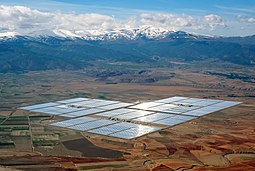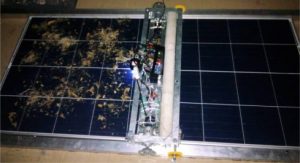SOP and Frequency for Solar Panel Cleaning
SOP

Standard operating procedures for solar panel cleaning, generally focusing on ensuring safety, efficiency, and the preservation of the solar panels. While the specifics may vary depending on the service provider or manufacturer, a typical SOP might include the following elements:
- Safety Precautions
- Protective Gear: Technicians must wear PPE such as gloves, goggles, and non-slip footwear.
- Electrical Safety: Ensure that the system is turned off to avoid electrical hazards.
- Ladders/Scaffolding: Use proper tools to access rooftop panels safely.
- Weather Conditions: Avoid cleaning during wet or stormy weather to prevent slips and accidents.
- Pre-Cleaning Inspection
- Check for any visible damage to the panels (cracks, loose wiring, etc.).
- Inspect for obstructions like debris, bird droppings, or dirt that may affect performance.
- Note areas that require special attention.
- Cleaning Materials and Methods
- Use of Soft Brushes or Sponges: To avoid scratching the surface.
- Water Usage: Use deionized water or distilled water to avoid mineral deposits that could leave streaks.
- No Harsh Chemicals: Only use approved cleaning solutions to avoid damaging the panel’s surface.
- Manual vs. Automated Systems: Depending on the size of the solar farm or rooftop system, manual cleaning may be preferred over automated systems for more delicate care.
- Cleaning Process
- Rinsing: Start by rinsing the panels with water to remove loose dirt and debris.
- Wiping: Use a microfiber cloth or soft brush to gently scrub any stubborn dirt.
- Final Rinse: Ensure that all cleaning agents are washed off completely.
- Drying: Air drying is usually sufficient, but for faster results, a soft squeegee may be used.
- Post-Cleaning Inspection
- Check the panels for streaks, residues, or remaining dirt.
- Inspect for any damage that may have occurred during cleaning.
- Confirm that no tools or cleaning materials are left behind.
- Reporting and Documentation
- Log details of the cleaning, including any damage noted or fixed during the process.
- Record the condition of the panels and performance after cleaning, to track improvements in energy efficiency.
Cleaning frequency

The cleaning frequency of solar panels depends on several factors such as the location, environmental conditions, and the level of dirt or debris accumulation. Here are some general guidelines for cleaning schedules based on different scenarios:
- Standard Cleaning Frequency
- Twice a Year: For most residential and commercial solar panel installations, a semi-annual cleaning (every 6 months) is sufficient. This schedule helps maintain performance and prevent significant dirt buildup.
- More Frequent Cleaning (Every 3-4 Months)
- Recommended for areas with higher dust or pollution levels.
- Desert or Dry Climates: Locations with frequent dust storms or dry weather tend to accumulate more dirt.
- Urban or Industrial Areas: Pollution from factories or heavy vehicle traffic can leave grime on the panels.
- Near Construction Sites or Farmland: Dust from construction activities or agricultural work can settle on the panels.
- Quarterly or Monthly Cleaning
- High Rainfall Areas: If you are in a region that experiences frequent rainfall, you may only need to clean the panels quarterly. Rain helps naturally wash away some dirt, though it won’t be as thorough as manual cleaning.
- Coastal Regions: Salt deposits from the sea air may require cleaning every 3 months to avoid corrosion or film buildup.
- Frequent Cleaning (Every 1-2 Months)
- High-Dirt Areas: For locations prone to heavy pollution, bird droppings, or leaves, cleaning every 1-2 months may be necessary.
- Large Solar Farms: Regular cleaning (monthly or bi-monthly) can ensure maximum energy production in utility-scale solar farms, where even slight efficiency losses can have a large impact.
- After Events
- Post-Storm Cleaning: After storms, panels may require immediate cleaning if they are covered in debris or dirt.
- Wildfires or Volcanic Ash: In areas affected by wildfires or volcanic ash, an immediate cleaning is often needed to remove the soot and debris that can severely impact performance.
- Performance-Based Cleaning
- Monitor Output: Track the energy production levels. If you notice a significant drop in output (more than 5%), it may indicate that the panels are dirty and require cleaning regardless of the scheduled time.
